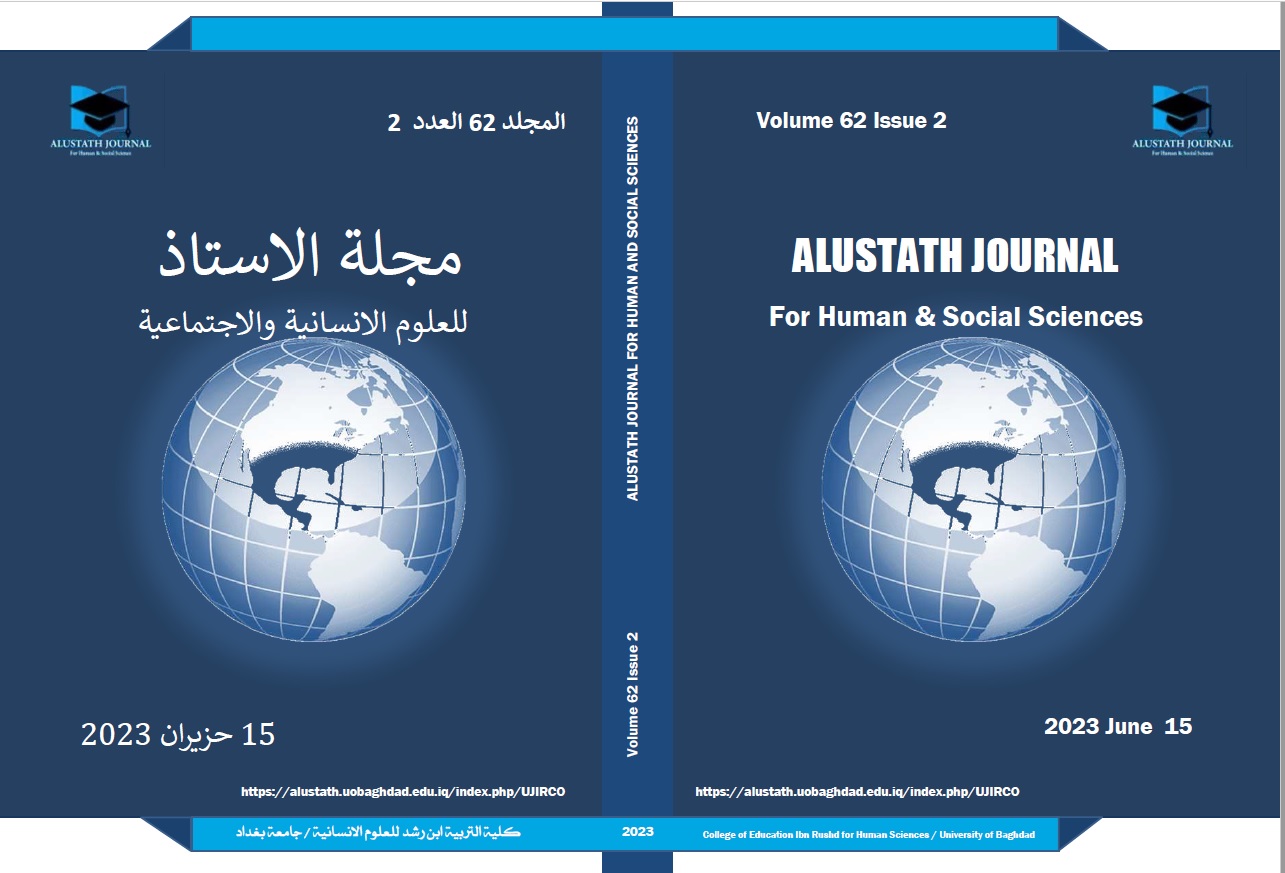Societies of Iran and Lebanon during and after the First World War in “Yaki Boud Yali Nabou” by Muhammad Ali Jamalzadeh, and “Kan ma Kan” by Mikhaeil Noaimeh (A Comparative Study)
DOI:
https://doi.org/10.36473/ujhss.v62i2.1959Keywords:
interdisciplinary studies, comparative literature, the Slavic school, Muhammad Ali Jamalzadeh, Mikhaeil Noaimeh, World War IAbstract
Comparative literature is a type of interdisciplinary studies that deals with the relationships between the literatures of different nations of the world, and studies the relationship between literature and other human sciences, including the social sciences. The usefulness of these studies is generally due to the fact that they end in obtaining important information, a better understanding of the literary works of different nations and the establishment of a bridge between them, as well as leading to more knowledge through contact with other world literatures. This research paper, by adopting the descriptive and analytical approach and within the framework of the Slavic or Russian School of Comparative Literature, especially the views of Victor Maksimovich Zhirmunsky, aims to study the situation of the Iranian and Lebanese societies during and after World War I in my collections ""Yaki Boud Yaki Naboud”) by Muhammad Ali Jamalzadeh” and “Kan Ma Kan” for Mikhail Naima”. The authors coexist in two similar societies to some extent, and the social implications of both groups and their method of dealing with social issues, as well as their similarities in various fields, including the title, justifies the necessity and importance of conducting this research. The results of the research showed that the two communities were very similar in the midst of the First World War and suffered from similar social problems that led to the creation of the two works, and the similarities between them in various social fields arise from the great similarity in the reality of the two communities. The deplorable status of women, the migration crisis, poverty, division, class divides; identity crisis and other bleak social risks such as suicide, betrayal, bribery and nepotism were among the most common social problems of that time period.
Downloads
References
• Abedini, Hassan (2000), Citizen of Fictional Cities: An Analysis of the Life and Works of Mohammad Ali Jamalzadeh, World of Economics, Tehran, Iran.
• Abundi, Walid Mahmoud (1999 AD), The Arab Heritage in Criticism of Michael Naima, without place of publication.
• Aladdin, Shadia (2020), “Lebanon from the late Ottoman era, administrative divisions and the affairs of soldiers and gendarmerie,” Army Journal, Issue 341, November 2013, at the following address: https://www.lebarmy.gov.lb /en/content.
• Alavi, Farideh, Saeedi, Soheila (2010), "A Study of the Status of Women in the Realistic Works of Jamalzadeh and Balzac", Journal of Women in Culture and Art (Women's Research), Volume 1, Number 3, pp. 39-58.
• Alloush, Saeed (1987 AD), Schools of Comparative Literature, a methodological study, the Arab Cultural Center, 1st Edition, Beirut.
• Astif, Abd al-Nabi (2007), "The Slavic School and Comparative Literature", Literary Position Magazine, Issue 433, Arab Writers Union, Damascus, pp. 6-13.
• Dakaq, Omar, Muhammad Najib al-Talawy, Murad Abdul Rahman Mabrouk (1393), features of modern prose and its arts, Dhu al-Qirbi, i 1, Qom, Iran.
• Dalal, Ocean, Hambali, Fateh, Zulekha, Zabanavi (2017), The Critical Project of Taha Hussein and Michael Naeema, Master's Thesis, Daneshgah Al-Arabi Bin Mahidi, Algeria.
• Hassan, Abdel Hakim (1983), “Comparative Literature between the French and American Concepts”, Fosoul Magazine, Shamara 3, pp. 11-17.
• Jamalzadeh, Mohammad Ali (2009), One Was One Was Not, Parvin Publishing House, Tehran.
• Majd, Mohammad Gholi (2008), The Great Famine (1298-1296 / 1919-1917), translated by Mohammad Karimi, Tehran: Institute of Political Studies and Research.
• Noaimeh, Michael (1981) Beyond Moscow and Washington, The Complete Works, Volume VI, d.t., d.n.
• Noaimeh, Michael (D.T), Kan Makan, Al-Manahil Press, 2nd Edition, Beirut.
• Pirani, Mansour (2012), "Comparative literature" in passing through the various schools and the elements involved in its emergence (with the approach of literary history), Journal of Literary History, No. 71, 19-35.
• Ra’ani, Shaheen (1396 A.D.), “Parsi the influences of Jang Jahani, the first social righteousness of Sakhtarhai’s regions in western Iran,” chapters of the narrations of HI Historical, Sal Nehm, Shamareh Som (Piapi 35), pp. 19-32.
• Travik, Buckner, (1994), History of World Literature, 2 vols. Translated by Arab Ali Rezaei, Forouzan Rooz Publishing, Tehran.
• Zare’, Masoumeh (1394 A.D.), “Karkard dialectic “Bod” and “Neboud” in the collection of “Yeki Bud Yek Nabud” Jamal-Zadeh and Mikhail Naimah, Fasnnameh Mu’talat Literary Criticism, Sal Dahm, Shamara (40), pp. 133-157.رجمة
• Zhirmunsky, V. M. “On the Study of Comparative Literature.” Oxford Slavonic Papers 13, 1967: 1-13.












